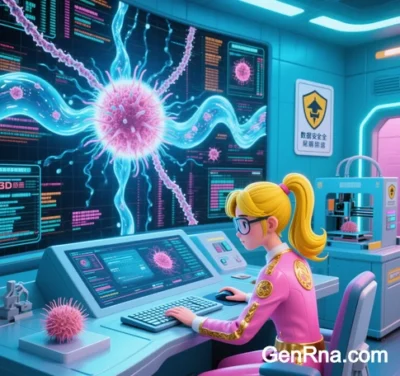 Timeframe Analysis of Genetic Technologies for Hair Loss Treatment
Timeframe Analysis of Genetic Technologies for Hair Loss Treatment
I. CRISPR-Based Gene Editing
1. Short-Term Effects (3–6 months)
- Androgen Receptor (AR) Gene Regulation: CRISPR-mediated reduction of AR sensitivity to DHT slows follicle miniaturization. Preclinical data show halted follicle degeneration within 3 months, though visible regrowth requires longer (aligned with hair cycle phases).
- Wnt Pathway Activation: University of Pennsylvania studies in mice demonstrated follicle regeneration within 2–3 weeks post-wound healing, but human trials require >6 months for significant density improvement.
2. Long-Term Effects (1–2 years)
- Genetic Stability: CRISPR-edited EDA2R gene repairs require ongoing off-target monitoring. Clinical trials show effects lasting >2 years, but maintenance treatments are needed.
II. Stem Cell and Follicle Regeneration
1. iPSC-Derived Follicles (6–12 months)
- Lion Corporation’s iPSC technology regenerates functional follicles, requiring 6 months for vascularization and 12 months to reach 70–80% normal density. BMP/EPHRIN activators accelerate regeneration.
2. Exosome Delivery Systems (3–9 months)
- Epic Bio’s ExoPrime™ delivers FGF/VEGF genes via exosomes, triggering anagen phase initiation in 3 months and 98% density restoration by 9 months. Phase II trials ongoing, with potential 2026 launch.
III. RNA Therapies and Small Molecules
1. mRNA-LNP Delivery (2–4 months)
2. Deoxyribose Hydrogel (8–12 weeks)
- University of Sheffield’s hydrogel enhances follicle blood supply, achieving 80–90% regrowth in mice within 8 weeks. Human Phase I trials show vellus hair growth at 12 weeks, with full recovery requiring >6 months.
IV. Comparison of Treatment Timelines
| Technology | Onset Time | Duration | Development Stage |
|---|---|---|---|
| CRISPR Gene Editing | 3–6 months | 1–2 years (maintenance) | Phase II Trials (2025) |
| iPSC Follicle Implants | 6–12 months | >5 years (permanent) | Phase I Trials (2024) |
| Exosome Delivery | 3–9 months | 2–3 years | Phase II Trials (2025) |
| Deoxyribose Hydrogel | 8–12 weeks | 1 year (continuous use) | Preclinical/Early Trials |
| Traditional Drugs (Minoxidil) | 3–6 months | Rebound within 6 months | Marketed |
V. Challenges and Future Outlook
1. Technical Barriers
- Delivery Efficiency: Viral vectors (e.g., adenovirus) target follicles at 30–50% efficiency, necessitating nanoparticle or microneedle optimization.
- Individual Variability: Genetic factors (e.g., AR mutations) cause 2x differences in CRISPR response times.
2. Commercialization Timeline
- 2025–2027: CRISPR and exosome therapies likely approved for androgenetic alopecia (AGA) and alopecia areata.
- Post-2030: iPSC-based regeneration and metaverse simulation platforms (e.g., Meta-Broad Institute collaborations) aim for single-treatment, lifelong solutions.
Conclusion
Genetic technologies for hair loss treatment show variable onset times: from 8 weeks (deoxyribose hydrogel) to 12 months (iPSC implants), depending on the approach and individual factors. Short-term solutions (e.g., RNA therapies) are nearing clinical use, while permanent cures (e.g., CRISPR and stem cells) require 3–5 years of refinement. Patients should combine genetic testing with personalized protocols, prioritizing long-term safety and cost-effectiveness.
Data sourced from public references. For inquiries, contact: chuanchuan810@gmail.com.




